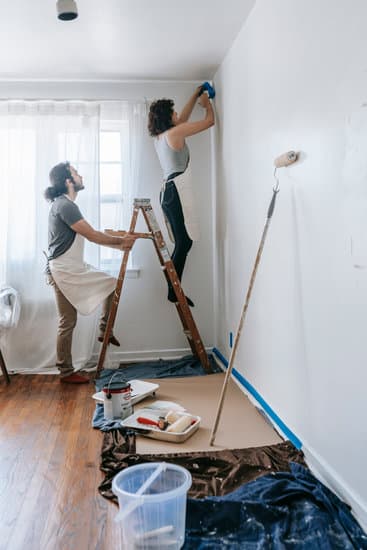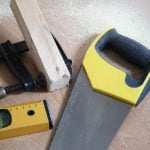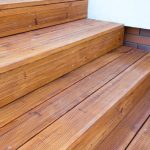Are you wondering how to improve your home’s insulation? Making sure that your home is properly insulated is crucial for energy efficiency, comfort, and cost-saving. In this article, we will dive into the importance of home insulation and provide you with valuable tips and information on how to improve it.
Proper insulation plays a significant role in maintaining a comfortable temperature within your home while reducing energy consumption. Understanding the importance of home insulation is essential for homeowners who want to create a more sustainable and cost-effective living environment. Whether you live in a cold or warm climate, having good insulation can help regulate indoor temperatures and reduce the strain on your heating or cooling system.
In this section, we will explore the signs that indicate your home may need better insulation, the different types of insulation materials available, DIY tips for improving home insulation, hiring a professional insulation contractor, the benefits of proper home insulation, common mistakes to avoid when insulating your home, how to conduct a home energy audit for insulation improvement, and additional considerations for insulating older homes.
So buckle up and get ready to learn everything you need to know about improving your home’s insulation.
Signs That Your Home Needs Better Insulation
Uneven Room Temperatures
One of the most noticeable signs that your home may need better insulation is if you experience uneven temperatures in different rooms. For example, some rooms may be significantly colder or warmer than others, even when the thermostat is set to a consistent temperature throughout the house. This inconsistency in room temperatures could indicate that the insulation is not effectively regulating heat flow throughout the home.
High Energy Bills
If you’ve noticed a sudden and unexplained increase in your energy bills, it could be a sign that your home needs better insulation. Poor insulation can result in heat loss during the winter and heat gain during the summer, causing your heating and cooling systems to work harder to maintain a comfortable indoor environment. As a result, you’ll see higher energy consumption and increased utility costs.
Drafts and Air Leaks
Feeling drafts or experiencing air leaks around windows, doors, or other openings in your home is another indication that your insulation may not be performing as it should. Drafty areas allow outside air to enter and conditioned air to escape, leading to discomfort for occupants and reduced energy efficiency. Identifying and sealing these air leaks can help mitigate the issue, but addressing the underlying insulation problems will provide longer-term solutions.
Different Types of Insulation Materials
Understanding the various types of insulation materials is essential when considering how to improve your home’s insulation. Each material has its own set of benefits and drawbacks that should be taken into account. The most common types of insulation materials include fiberglass, cellulose, foam, and mineral wool.
Fiberglass insulation is one of the most widely used materials for home insulation. It is composed of fine glass fibers and is known for its cost-effectiveness and fire-resistant properties. Cellulose insulation, on the other hand, is made from recycled paper or cardboard treated with fire-retardant chemicals. Foam insulation, including spray foam and rigid foam boards, provides excellent thermal resistance and can effectively seal air leaks.
Mineral wool, which includes rock wool and slag wool, is another popular choice due to its fire resistance and sound absorption properties. Each type of insulation material has different R-values, which measure their thermal resistance. It’s important to consider factors such as moisture resistance, flammability, and environmental impact when choosing the right insulation material for your home.
| Insulation Material | Main Properties |
|---|---|
| Fiberglass | Cost-effective, fire-resistant |
| Cellulose | Recycled material, fire-retardant |
| Foam | Excellent thermal resistance, seals air leaks |
| Mineral Wool | Fire-resistant, sound absorption properties |
DIY Tips for Improving Home Insulation
Improving your home’s insulation can not only help you save on energy costs, but also make your living space more comfortable. There are several do-it-yourself (DIY) tips that can help you achieve better insulation without breaking the bank.
One of the most effective DIY methods is to seal any cracks or gaps in doors, windows, and walls using caulking or weatherstripping. These small openings can significantly impact the temperature regulation in your home and contribute to higher energy bills.
Another DIY tip for improving home insulation is to add insulation to areas that are commonly overlooked, such as the attic, basement, and crawl spaces. Adding insulation to these areas can prevent heat loss and maintain a consistent temperature throughout your home. Additionally, wrapping hot water pipes with insulation can help conserve energy and reduce heat loss.
Furthermore, consider installing thermal curtains or blinds on windows to further regulate indoor temperatures. Thermal curtains are designed to block out drafts and retain heat during the colder months while keeping your home cooler in the warmer months. These simple DIY solutions can go a long way in improving your home’s insulation and reducing energy consumption.
Hiring a Professional Insulation Contractor
When it comes to improving your home’s insulation, sometimes the best option is to hire a professional insulation contractor. These experts have the knowledge and experience to assess your home’s insulation needs and provide the best solutions for improving energy efficiency. Professional contractors can also ensure that the installation of new insulation is done correctly, maximizing its performance and longevity.
One of the benefits of hiring a professional insulation contractor is their access to a wide variety of high-quality insulation materials. They can recommend the best type of insulation for your specific needs, whether it’s fiberglass, cellulose, spray foam, or another material. Additionally, professionals have the necessary tools and equipment to handle the installation process safely and efficiently.
It’s important to do thorough research when hiring an insulation contractor. Look for professionals with a proven track record of successful installations and satisfied customers. Ask for referrals and read online reviews to ensure that you’re choosing a reputable contractor. Additionally, make sure that the contractor is properly licensed and insured to protect yourself and your home during the installation process.
By hiring a professional insulation contractor, you can save time and avoid potential mistakes that could arise from attempting a DIY insulation project. A well-insulated home not only improves energy efficiency but also enhances comfort and indoor air quality. With expert help, you can take steps towards creating a more sustainable and comfortable living environment for you and your family.
The Benefits of Proper Home Insulation
Proper home insulation can provide a wide range of benefits to homeowners, not only in terms of energy efficiency but also in creating a more comfortable living environment. By effectively insulating your home, you can enjoy lower energy bills, improved indoor comfort, and even contribute to the reduction of your carbon footprint.
Energy Efficiency
One of the key benefits of proper home insulation is the improvement in energy efficiency. Insulation helps to keep your home warm in the winter and cool in the summer, reducing the need for excessive use of heating and cooling systems. This, in turn, leads to lower energy bills and reduced energy consumption.
Improved Comfort
Another benefit of proper home insulation is improved indoor comfort. Insulation helps to maintain a consistent temperature throughout your home, eliminating drafts and cold spots. This means that you can enjoy a more comfortable living environment all year round.
Environmental Impact
Proper home insulation also has positive effects on the environment. By reducing your energy consumption, you can contribute to lower greenhouse gas emissions and help lessen the environmental impact of your household. Proper insulation is not only beneficial for your own comfort and finances but also for the planet as a whole.
Common Mistakes to Avoid When Insulating Your Home
When it comes to improving home insulation, there are common mistakes that homeowners should avoid in order to ensure the effectiveness of their efforts. By steering clear of these mistakes, you can make sure that your home is properly insulated and energy-efficient.
Here are some common mistakes to avoid when insulating your home:
1. Using the wrong type of insulation: It’s important to choose the right type of insulation for different areas of your home. For example, using fiberglass insulation in a damp area like a basement can lead to mold and mildew issues. Make sure to research and consult with a professional to determine the best insulation for each specific area of your home.
2. Ignoring air leaks: Proper insulation goes hand in hand with air sealing. Ignoring air leaks can drastically reduce the effectiveness of your insulation. Be sure to properly seal any gaps or cracks in windows, doors, and other areas where air could be escaping.
3. Unprofessional installation: While DIY insulation projects can be effective, it’s important to ensure that the installation is done correctly. Poorly installed insulation can lead to inefficiency and potential hazards such as fire risks when dealing with certain materials.
By avoiding these common mistakes, you can ensure that your home is properly insulated and energy-efficient, saving you money on utility bills while maintaining a comfortable living environment.
How to Conduct a Home Energy Audit for Insulation Improvement
A home energy audit is a great way to assess your home’s energy efficiency and determine where improvements can be made to better insulate your home. Here are some steps to conduct a thorough home energy audit:
1. **Assess the Exterior:** Take a walk around the exterior of your home and look for any gaps or cracks where air might be escaping. Check around windows, doors, and where different building materials meet.
2. **Check Insulation Levels:** Inspect the insulation in your attic, walls, and basement to ensure that it is adequate. Look for any signs of deterioration or settling that may indicate the need for replacement or additional insulation.
3. **Examine Heating and Cooling Systems:** Evaluate your HVAC system to ensure it is functioning properly. Check for leaks in ductwork, clean or replace air filters, and consider upgrading to a more energy-efficient model if necessary.
4. **Conduct a Blower Door Test:** This test can help determine the air tightness of your home by using a special fan to depressurize the house and measure airflow. This can identify areas where air leakage is occurring.
By conducting a thorough home energy audit, you can identify specific areas where improvements can be made to enhance your home’s insulation and overall energy efficiency.
Additional Considerations for Insulating Older Homes
In conclusion, improving the insulation of older homes is crucial for maintaining energy efficiency, reducing utility bills, and increasing overall comfort. With the understanding of the importance of home insulation and recognizing the signs that a home may need better insulation, homeowners can take proactive measures to address any issues. Additionally, knowing the different types of insulation materials and DIY tips for improving home insulation can empower homeowners to make informed decisions about their homes.
While hiring a professional insulation contractor may come with additional costs, the benefits of proper home insulation far outweigh the initial investment. Properly insulated homes experience improved indoor air quality, reduced noise pollution, and increased resale value. It’s also essential to be aware of common mistakes to avoid when insulating your home; this includes overlooking areas like crawl spaces and attics or using incorrect insulation materials.
Moreover, conducting a home energy audit can provide valuable insights into where a home may be losing energy and where improvements in insulation are needed. This audit can help identify areas such as windows, doors, and other potential air leaks that contribute to poor insulation. With these additional considerations in mind, homeowners can effectively address any insulation issues in their older homes and create a more energy-efficient living environment for years to come.
Frequently Asked Questions
How Can I Make My House Insulated Better?
Making your house more insulated can be achieved through a few methods. Firstly, you can ensure that your walls and attic are properly insulated with materials such as fiberglass, cellulose, or foam insulation.
Additionally, sealing any gaps or cracks in windows, doors, and around fixtures can help prevent heat from escaping. Installing energy-efficient windows and doors can also make a significant difference in improving insulation.
How Do I Upgrade My House Insulation?
Upgrading the insulation in your house involves assessing the current state of insulation and making necessary improvements. This may include adding more insulation to the attic or walls, replacing old or ineffective insulation materials, and sealing any air leaks.
Another effective method is to consider using spray foam insulation to fill in small gaps and crevices that traditional insulation may not cover.
How Can I Improve My Poorly Insulated House?
If your house is poorly insulated, there are steps you can take to improve its efficiency. Start by conducting an energy audit to identify areas of improvement, such as adding or replacing insulation in key areas like the attic, walls, and basement.
Sealing any air leaks with caulk or weatherstripping is also essential for preventing heat loss. Additionally, upgrading to energy-efficient windows and doors can contribute to better overall insulation for your home.

I’m thrilled to have you here as a part of the Remodeling Top community. This is where my journey as an architect and remodeling enthusiast intersects with your passion for transforming houses into dream homes.





